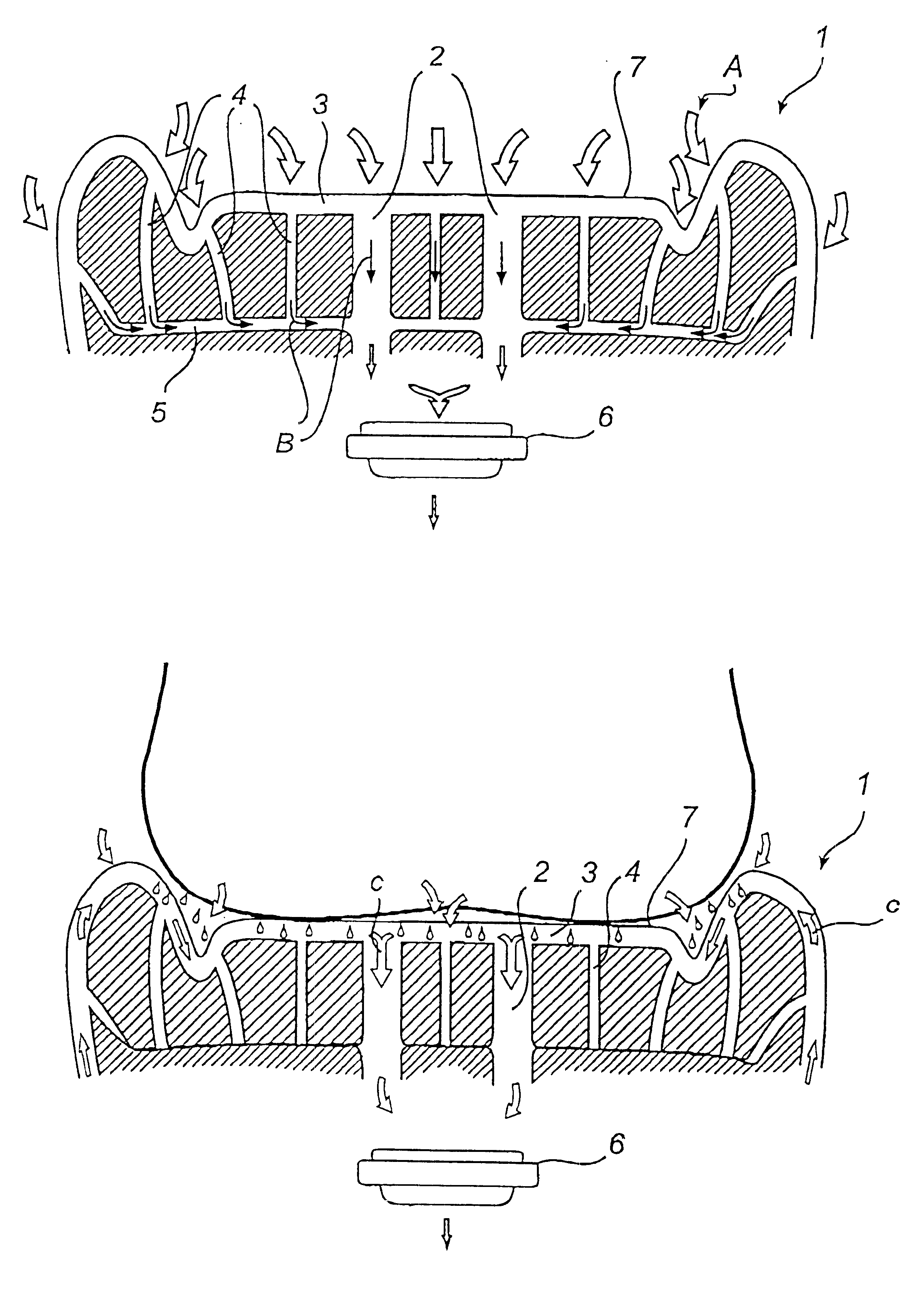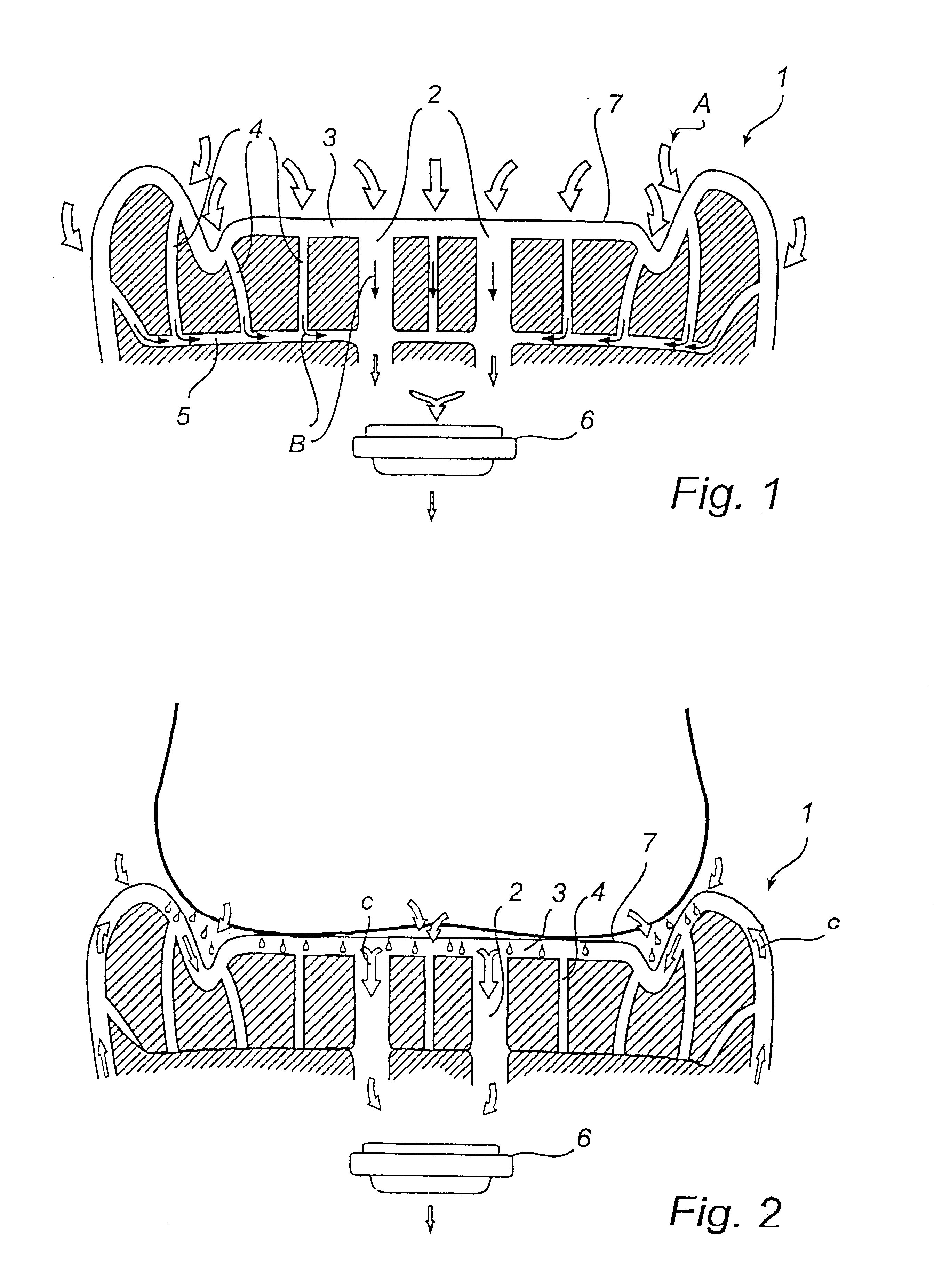Ventilation seat
a technology of ventilating seat and seat body, which is applied in the field of ventilating system, can solve the problems of affecting the temperature of the seat, affecting the comfort of the seat, and causing further discomfort, and achieves the effect of simple design
- Summary
- Abstract
- Description
- Claims
- Application Information
AI Technical Summary
Benefits of technology
Problems solved by technology
Method used
Image
Examples
Embodiment Construction
FIGS. 1, 2 and 3 show a part of a car seat in cross-section. In these Figures, the seat part is a seat bottom 1, but the invention could just as well be applied to the backrest of the seat. The seat bottom has a network of ducts 2, 3, 4, 5, which cross the seat bottom 1 in a number of different directions. In this embodiment, there is a number (two are shown) of branch ducts 2, which are located in the middle portion of the seat bottom. These branch ducts 2 have a comparatively large diameter and cross substantially the entire seat bottom 1 in its thickness direction. In direct connection with these branch ducts, on the underside of the seat bottom, a fan is arranged, which can exhaust air through the seat bottom, preferably from the upper side of the seat bottom to its underside. The surface of the seat bottom is covered by a permeable layer 7. This layer should be permeable to both moisture and air and can, for instance, be a layer of textile, perforated leather or the like. Along...
PUM
 Login to View More
Login to View More Abstract
Description
Claims
Application Information
 Login to View More
Login to View More - R&D
- Intellectual Property
- Life Sciences
- Materials
- Tech Scout
- Unparalleled Data Quality
- Higher Quality Content
- 60% Fewer Hallucinations
Browse by: Latest US Patents, China's latest patents, Technical Efficacy Thesaurus, Application Domain, Technology Topic, Popular Technical Reports.
© 2025 PatSnap. All rights reserved.Legal|Privacy policy|Modern Slavery Act Transparency Statement|Sitemap|About US| Contact US: help@patsnap.com



